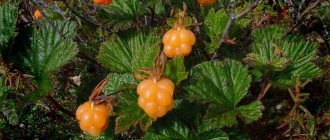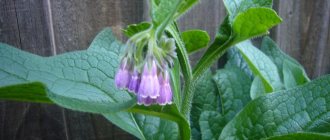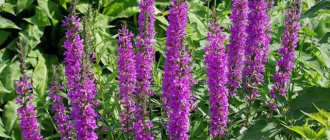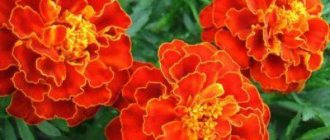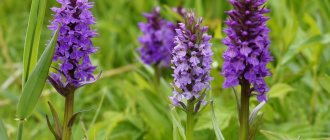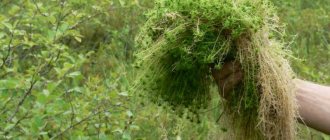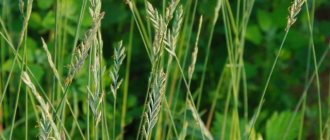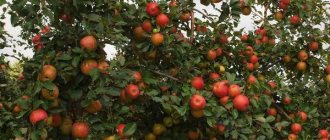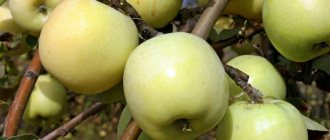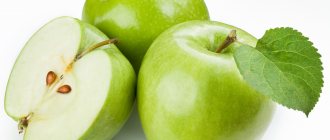- Uses of coriander
- Useful properties of coriander
- Use of coriander in folk medicine
- Use of coriander in cooking
- Agricultural technology for growing coriander
- When and how to sow coriander
- Spring sowing of coriander
- Sowing coriander for greens in August
- Decorative properties of coriander
- Video: the best varieties of coriander (cilantro), how to plant and care for cilantro
Coriander, cilantro (Coriandrum sativum) - Celery family (Apiaceae). An annual herbaceous plant with a thin spindle-shaped main tap root and a dense network of lateral roots penetrating into the soil to a depth of 1-1.5 m.
On a note! Coriander and cilantro are essentially the same plant. Cilantro is the name given to the grass itself, or more precisely, its green part. Coriander is the seed of the plant. Although the greens and seeds taste slightly different, both are successfully used in cooking.
Coriander, or cilantro (Coriandrum sativum).
It grows wild in Southern Europe, on the Mediterranean coast. It is also found in the European part of Russia, in the upper reaches of the Volga and Trans-Volga region, in the Far East as a weed in vegetable gardens, crops, and near housing.
On a note! To obtain seeds, it is sown in early spring or autumn. You can also do winter sowings: in this case, the green harvest will be earlier and the seed yield will be higher.
Coriander is an essential oil plant common in the gardens of summer residents. Its young leaves are rich in vitamin C (up to 140 mg per 100 g of wet weight), carotene, and rutin. They are used as an additive to salads, sauces, soups, as a seasoning for meat and fish dishes, and sandwiches. The rosette leaves of young plants are eaten before they begin to bolt.
Coriander is one of the world's most popular spices, and its greens are often called coriander or cilantro.
Coriander seeds have a pleasant spicy aroma, reminiscent of anise, as well as an initially mild and later sharp spicy taste. Coriander is used in the production of homemade sausages, beer, in the preparation of salads, rice, fried pork and for canning fruits. It is added to dough products, vegetable dishes, sauces, goulash, some types of fish, as well as honey gingerbread and dry cookies. Coriander improves the taste of peas, beans and lentils. It is added to cabbage, poultry pate, red beets, applesauce, carrots, and used for stuffing poultry. Coriander is an annual herbaceous plant of the celery family, forms a basal rosette of leaves and an erect, cylindrical, branched stem, sometimes with anthocyanin coloring, up to 120 cm high. Coriander leaves are similar to parsley leaves. Small flowers, white and pink, are collected in an umbrella. Flowering begins with the central umbrella, which ends the main stem, the remaining umbrellas bloom simultaneously. The flowers are cross-pollinated. The fruits are spherical two-seeded seeds with a diameter of 2-7 mm with a strong aroma, yellow-brown color. Unripe seeds have an unpleasant odor.
Uses of coriander
Coriander is the oldest cultivated plant; its fruits were found in ancient Egyptian tombs of the 10th century. BC e. Since ancient times it has been known among the peoples of Transcaucasia and Central Asia. Coriander first appeared in Russia in the 16th century.
The name coriander comes from the Greek word 'koris' (bug) due to its special aroma.
In world practice, coriander is produced as a grain to obtain essential oil, as a spice grain without extracting the essential oil, and to obtain spicy herbs. The main areas of its cultivation in our country are the Central Black Earth region, the Middle Volga region, and the North Caucasus. In our country, 5 industrial and 10 salad varieties of coriander have been cultivated.
History of cilantro cultivation since ancient times
Cilantro is mentioned in the Iberian Papyrus, which describes natural medicinal plants and poisons and dates back to 1550 BC. Paleobotanists found fossilized coriander seeds in the tombs of the 21st dynasty of Egyptian pharaohs. It is believed that the manna described in verse 16:31 of the biblical book of Exodus is white coriander seeds.
During the heyday of Hellenic and Roman civilization, cilantro seeds called coriander, and perhaps also the herbs, were widely used as a medicine and spice. Hippocrates writes about the plant in 400 BC, and under the ruins of Pompeii, buried under ash in the 1st century BC, archaeologists also discover round coriander seeds. An image of a cilantro plant has been preserved, in the photo, from the book of Dioscorides.
With cohorts of Roman soldiers, the plant came to Gaul, and later to Britain. The invaders flavored the unleavened barley porridge with ground coriander grains and spicy herbs and preserved the freshness of the meat.
In the south-east of Great Britain you can still see wild coriander, which does not let you forget about the distant history of the country.
Useful properties of coriander
Coriander is a seasoning rich in many substances beneficial to the human body. That is why this spice is so valuable in cooking and other uses. Ripe coriander fruits of domestic varieties contain up to 2.4% essential oil with a very pleasant and delicate smell and taste. Coriander leaves contain ascorbic acid (vitamin C), vitamins B1 and B2, carotene, and rutin.
Coriander, or vegetable coriander (Coriandrum sativum L.) is a herbaceous annual cold-resistant spicy plant with a height of 40 to 100 cm.
The composition of spiced seeds includes:
- pectin;
- routine;
- folic, ascorbic acids;
- sodium, iron, phosphorus, fluorine, copper, potassium, calcium;
- vitamins B, C, A, PP;
- essential oils.
Per 100 grams of product there are:
- 23 kcal;
- fat - 0.5 g;
- proteins - 2.3 g;
- carbohydrates - 0.9 g.
Thanks to its saturation with vitamins and minerals, coriander gives the human body undoubted benefits.
In folk medicine, not only coriander fruits have long been used, but also the entire plant collected in the flowering phase. Decoctions and infusions of coriander have antiseptic properties, are a good choleretic, expectorant, analgesic, antihemorrhoidal agent, promote wound healing, and stimulate the restoration of damaged tissues.
Coriander is a valuable spicy-flavoring crop. Fresh and dried herbs collected during the flowering period of plants, as well as seeds (fruits), are used as spices. Meat and vegetable soups, fried meat, fish, and salads are flavored with fresh herbs. The fruits flavor bakery and confectionery products; they are used in the fish canning industry, as well as in home cooking - in the manufacture of sausages, stewing meat and game, pickling fish, preparing bread and flatbreads.
Composition and calorie content
The composition of the seeds varies depending on the degree of maturity. They contain essential coriander oil (Latin Oleum corandri aethereum), mainly consisting of terpenoids (linalool, camphor, γ-terpinene, α-pinene, etc.) and fatty oil (Latin Oleum coriandri), which in its properties resembles palm oil and coconut. Roots and greens also contain small amounts of essential oil.
The calorie content of seeds is 298 kcal, leaves - 23 kcal. Below is the content of vitamins, macro- and microelements in greens.
Macronutrients:
- water - 77.93 g;
- carbohydrates - 18.7 g;
- fats - 0.45 g;
- proteins - 1.1 g.
Vitamins:
- C - 27 mg;
- E - 2.5 mg;
- B1 - 67 mcg;
- B2 - 0.16 mg;
- B3 - 1.11 mg;
- B5 - 0.57 mg;
- B6 - 0.15 mg;
- folic acid - 62 mcg;
- A - 0.34 mg;
- K1 - 0.31 mg.
Minerals:
- potassium - 0.52 g;
- magnesium - 26 mg;
- zinc - 0.5 mg;
- iron - 1.77 mg;
- copper - 0.23 mg;
- calcium - 67 mg;
- selenium - 0.1 mcg;
- sodium - 46 mg;
- manganese - 0.43 mg;
- phosphorus - 48 mg.
Fatty acid:
- saturated - 14 mg;
- simple unsaturated - 0.28 g;
- polyunsaturated – 40 mg.
Use of coriander in folk medicine
The whole plant contains a large amount of vitamins, minerals, essential oil (in fruits - 1.6% -2.4%), resins. But - most importantly - their beneficial properties are enhanced by the presence of special acids: myristic, palmitic, stearic.
For medicinal purposes, coriander fruits are used, as well as leaves and flowers, which are collected from the moment of flowering.
Coriander-based preparations strengthen the cardiovascular system. This plant is used in the treatment of arrhythmia, atherosclerosis, depression, food poisoning, and dysbacteriosis.
To prevent atherosclerosis, arrhythmia, hypertension, cilantro greens (30 g) and seeds (5 g) are poured with a liter of boiling water. Leave for an hour, filter and add two tablespoons of rose hips and one tablespoon of chokeberry juice. Take 100 ml three times a day before meals (about 1 hour). The course is three weeks (twice a year).
To prevent heart attack and stroke , finely chop cilantro (one bunch), add chopped dried apricots (50 g), crushed walnut kernels (20 g) and two tablespoons of honey. Take two tablespoons 3 times a day half an hour before meals. Course – two weeks (four times a year).
Coriander has bactericidal, anti-inflammatory and wound-healing effects. Slowly healing wounds and ulcers are sprinkled with powder prepared from dried coriander leaves.
For the prevention and treatment of stomatitis, periodontal disease, gingivitis, juice from fresh cilantro is diluted with water in a 1:1 ratio and rinsed with mouth 2 times a day. The course is one week.
For sore throat and tonsillitis, gargle with a warm infusion of coriander greens. One teaspoon of fresh chopped cilantro is poured into a glass of boiling water. Infuse, wrapped in a towel or in a thermos, for 20 minutes and filter.
Coriander essential oil is used in medicine, in the food industry, and in cosmetology. Back in the 17th century, coriander essential oil was a component of eau de toilette produced in Paris. It was actively added to tobacco mixtures.
Coriander oil is considered one of the most powerful bactericidal agents.
Coriander oil is considered one of the most powerful bactericidal agents, as well as the fastest acting antidepressant oil. Helps relieve irritability, nervousness, feelings of fear and anxiety, and headaches. Coriander oil helps relieve pain, gently warms and soothes rheumatism and neuralgia, normalizes blood sugar levels, and also restores strength during exhaustion and chronic fatigue.
How to store it correctly
The spice is sold in significant quantities, and given that a tiny amount is required to enrich a dish, the question arises: how to properly store the seasoning.
To add coriander to food for a long time, it is recommended to follow these tips:
- storage place - dry, protected from sunlight;
- suitable container - glass jar or canvas bag;
- The shelf life of the product is no more than 4 years in the specified conditions.
Cilantro has a much shorter shelf life, but is distinguished by a variety of ways to prepare greens. The table below presents the main options with a short description.
| Storage method | Description |
| Drying | Rinse, dry the greens with a paper towel, place in a dry, well-ventilated area or in the oven for 4-5 hours (temperature - 40-45 ° C). Place in a convenient storage container. Keep in the house for no more than 1 year. |
| Freezing in vegetable oil | Rinse the cilantro, remove excess moisture, and chop using a blender. Add vegetable oil (80 ml per 50 g of cilantro). Puree and pour into ice cube trays. Store in the freezer for 1-1.5 years. |
| Freezing in butter | Peel the greens and chop with a knife. Leave the oil until softened, add to the cilantro (100 g of oil per 3 tablespoons of greens), stir. Add your favorite spices (salt, garlic, lime zest), place the mixture on parchment, and freeze. Cut into cubes or other convenient shape. |
| Pickling | Prepare herbs and salt (250 g per 1 kg of herbs). Sterilize the jars, spread out the chopped herbs, sprinkle with salt. Press the contents to the bottom until the juice appears. Close the containers and place in the refrigerator. Store in a cool place for no more than 10 months. |
| Pickling | Wash the cilantro thoroughly, chop it, and place it in jars. Prepare the marinade (0.3 liters of water + 1 pinch of salt + 1 tablespoon of vinegar), pour the liquid over the herb, let it brew. Close the jars tightly and store in the refrigerator. To extend the shelf life, it is recommended to pour vegetable oil on top of the marinade. |
Coriander is a universal spice. Despite its prevalence and popularity, few people know what coriander looks like and what it is used for.
“Close acquaintance” with seasoning is the key to not only the appearance of tasty and healthy food in the house, but also an important component of traditional medicine
Was this information useful to you? Learn more about spices and seasonings.
Use of coriander in cooking
In ancient Rome, the juice of fresh coriander leaves was combined with vinegar and rubbed into meat to preserve it longer. Modern research by scientists has confirmed the correctness of such actions. It turned out that the plant contains substances that have bactericidal and fungicidal effects.
In Thai cuisine, coriander is used in the preparation of most dishes, and not only seeds and fresh leaves are added, but also flowers, roots, and stems. Chocolates, lollipops, marmalade, cookies and ice cream with cilantro are very popular in Japan. It is used to make salty chips and prepare lemonade in combination with mint, not to mention countless ready-made sauces and pastes.
Coriander seeds, which have a specific aroma, are often used in the preparation of salads, meat and fish dishes, soups, sausages, cheeses and confectionery.
In India, cilantro seeds are added to almost any salads, soups, side dishes, fermented milk products, jams, fruit sauces and, of course, they are the main component of the most popular spice curry.
Coriander seeds are included in the recipes of famous gins, as well as Chartreuse and Benedictine liqueurs.
For culinary purposes, leaves are used (they are collected before the budding phase), seeds, and not only mature ones, but also very fragrant green “balls”. Ripe seeds are an integral part of many spices, and green ones are used to prepare salads, they are added to cottage cheese, omelettes, and fish is baked with them.
This is interesting! The aroma of coriander seeds depends on their degree of ripeness. For example, the aroma of dried green “balls” has hints of floral scents. Some even experience a spicy aroma with a hint of lily of the valley.
When preparing salads, pastas and side dishes, keep in mind that cilantro goes very well with ginger, black pepper, citrus fruits, especially lime, basil, citronella (lemongrass).
Where do you add ground coriander?
Housewives are often interested in what dishes coriander seasoning is suitable for. This spice will most fully reveal its aroma in the following dishes:
- lentil, chickpea and bean soup, cabbage stew;
- in homemade sauces - mole, satsebeli, tkemali, adjika;
- marinade for preparing fish dishes;
- in homemade baked goods made from rye flour, salads;
- different types of goulash, carrot, beet and pumpkin dishes.
Hot drinks - grog, mulled wine, punch, coffee or chocolate will take on a completely different taste. You just have to add coriander spice to them. Knowing where ground coriander is added, you can prepare real culinary masterpieces at home.
The only difference between the spice is that it has a much less pronounced aroma and taste. This is because some of the essential oils evaporated during processing. It is recommended to use ground spice as follows:
- For flavoring tea. If you add at least a pinch of coriander powder to it, you can get an unsurpassed taste.
- Flavoring the soup. Light and clear soups will acquire not only an excellent aroma, but also a beautiful shade.
- Making homemade mustard. This seasoning will have a delicious taste.
Agricultural technology for growing coriander
Coriander is undemanding to heat and is highly frost-resistant. The plant is drought-resistant, but at the first stage of development and during fruit set it is very sensitive to moisture. For sowing, choose well-lit areas with light, fertile soils with a neutral or slightly alkaline reaction. On swampy, acidic, clayey soils that easily form a crust, coriander grows poorly.
The plant is propagated by seed. Sowing coriander in the southern regions (in the North Caucasus) can be done in the fall (late August - early September), in other regions - in early spring. The seeding depth is 2-3 cm.
Growing in the garden
The timing of sowing spice seeds depends on the region. Coriander is not frost-resistant and at the same time does not tolerate extreme heat. In temperate regions, the best time for planting is from March to May.
In tropical climates, cilantro grows best during cooler, drier periods of the year, such as fall. When it gets too hot, the plant flowers and produces seeds.
Landing
Choose an area in the garden that gets plenty of sun. In southern regions where the ground heats up too much, it is best to plant the seeds in partial shade. The soil should be light, drain well, and have an acidity of 6.2 to 6.8.
If desired, mulch the top layer with compost, decayed leaves or manure using a shovel, rototiller or pick before planting. The layer thickness should be 5-8 cm. After mulching, level the ground with a rake.
Planting depth - 0.6 cm, interval between holes - 15-20 cm. Distance between rows - 30 cm. Seeds need a lot of moisture, so water them often. They will germinate in about 2-3 weeks.
Since coriander grows quickly, plant a new batch of seeds every 2-3 weeks to provide yourself with greens for the entire season.
Care
When the height of the sprouts has reached 5 cm, feed them with water-soluble nitrogen fertilizer. Try not to overdo it: only 1/4 cup is needed per 8 meters of soil where coriander is growing. Less water is now needed. The soil should be moist, but not wet, as the plant prefers a dry climate.
There is no need to feed coriander during the growth period: the plant only needs the fertilizers that you added to the soil when preparing the area for planting
Once sprouts emerge, add some mulch at the base to prevent weeds. Don't let the cilantro grow overgrown. Start thinning the crops when its height is 5-8 cm. Pull out small bushes, allowing the strongest ones to grow. Leave a distance of 20 to 25 cm between individual plants.
Harvesting
Trim individual leaves and stems at the base, close to the ground, when the bushes have grown to a height of 10-15 cm.
Use fresh, new leaves for cooking rather than old fern-like leaves, which can taste bitter.
Do not cut off more than a third of the leaves at once, as the plant will weaken. After harvesting, it will grow for at least another 2-3 cycles.
When and how to sow coriander
When growing coriander in a personal plot as a spice, it is sown at several times with an interval of two weeks, from early spring to mid-summer.
It is better to prepare the soil for planting this plant in the fall. For digging, manure (3-4 kg/m2) and mineral fertilizers are added: superphosphate and potassium chloride at 15-20 g/m2. They dig with a shovel on a bayonet.
Coriander seeds are difficult to germinate: they are covered on the outside with an oily shell and therefore take a long time to germinate. To speed up this process, before sowing, they are soaked for several days, changing the water regularly. But a more effective technique is bubbling - soaking seeds in water saturated with oxygen or air. At home, this procedure is carried out using a microcompressor, which is usually used to aerate water in aquariums. To do this, you will need a tall container, which is filled halfway with water. Seeds are poured into it and a microcompressor tube is inserted there. It is necessary to ensure that the seeds do not sink to the bottom during the procedure, but are constantly suspended.
Coriander leaves are edible only for a month, before the budding phase. After this, it is better not to include greens in the diet.
Coriander is sown both in early spring and autumn. The seeding rate is 1 g/m2, according to a pattern of 20x8 cm, to a depth of 2 cm. To create a green conveyor, sow at the earliest possible date, and then at intervals of 15-25 days every 2 weeks until mid-August.
Recipes with aromatic spices
The culinary uses of coriander are varied. With its help you can prepare incredibly tasty dishes. They also add other spices that complement the flavor of the main dish.
Meat salad
Components:
- 1 kg veal, 3 small onions;
- coriander - to taste, herbs, 2 pomegranates;
- 5 cloves of garlic, black pepper, 500 g of mayonnaise.
Cooking process:
- The meat needs to be boiled and cut into cubes approximately 1 cm long. Cut the onion into slightly smaller cubes.
- Peel the pomegranate. Mix meat, pomegranate, onion, coriander grains.
- Add salt, pepper, crush garlic. Add mayonnaise and mix the salad thoroughly.
Pumpkin soup
It is very satisfying and healthy. Its components:
- pumpkin pulp. half a leek;
- coriander, 2 onions. a glass of cream, greens for decoration.
Step by step instructions:
- Chop the pumpkin pulp and onion. Place everything in a saucepan and add leeks.
- Pour in enough cold water to cover the pumpkin and onions. Bring to a boil and cook over low heat.
- Reduce heat and cook until done. Towards the end of cooking, add coriander. It is not recommended to add spices earlier so that their aroma does not evaporate.
- Grind the vegetables using a blender, add salt, and heat the resulting puree. Pour in the cream and mix well. Serve with greens.
Knowing which dishes coriander seasoning is suitable for will help you create truly unsurpassed culinary masterpieces. This spice will diversify your everyday and holiday table. The grains can be used whole or ground.
Spring sowing of coriander
If coriander was not sown before winter, then you can start sowing already in April, although due to low night temperatures, germination is slow. If night temperatures exceed +6 °C, then seed germination occurs within 10 days. Increased soil moisture greatly promotes rapid seed germination.
When sowing in spring or before winter, choose a place for growing coriander that is slightly shaded. In direct sunlight, cilantro leaves become smaller, become tough and quickly turn yellow.
On a note! The essential oil contained in the fruits significantly inhibits seed germination. Therefore, before sowing, cilantro seeds are kept in warm milk for about four hours (the same as anise, caraway, and parsley seeds). As you know, essential oils dissolve well in fats, and after about four hours the milk acquires a light cilantro aroma. The seeds are washed with warm water and can now be sown.
For successful cultivation of coriander, sandy and loamy soils with a slightly alkaline reaction and sufficient lighting are suitable.
The distance between sowing rows is 20 cm, and between plants in a row is 10 cm. Sowing depth is approximately 1 cm.
The aroma of coriander is quite strong and affects the neighbors in the garden. For example, fennel and dill have reduced taste and aroma. But cilantro is not able to “compete” with mint; the aroma of the cilantro itself becomes much weaker or disappears completely.
Since the coriander stem is quite flexible, by the time the fruit develops it is tied to a support.
Water coriander abundantly, but reduce watering after flowering and stop altogether during the period of seed ripening.
Types and varieties of cilantro seasoning
Cilantro photo
Seed coriander has varieties that differ in the speed of ripening, growing conditions and characteristics of the chemical composition.
The most common of them:
- Mid-season “Debut” with a high content of vitamin E. Recommended for planting in open ground.
- “Amber” with thick leaves and a high concentration of essential oils in the composition.
- Mid-season "Vanguard" with low-growing shoots. Suitable for growing at home.
- Late-ripening "Taiga", also known as mountain cilantro, with a strong odor and abundant leaves.
- Vegetable coriander or early ripening “Picnic”, suitable for home cultivation, characterized by high yield.
Not a single variety of coriander tolerates lowlands. Under such conditions, the plant may die.
Sowing coriander for greens in August
Coriander can be sown in August just to collect leaves. This is a “long day” plant and it is “more profitable” to sow it for greenery when the daylight hours become shorter. The full development cycle of a plant necessarily includes the flowering phase, and this requires a lot of light.
For “autumn” sowing, choose warm, sunny areas, rather than shaded areas, as was the case with spring sowing. Shoots of “autumn” cilantro appear quickly and the appearance of the plants differs from those sown in the spring.
They give all their strength to the leaves, and flower stalks do not appear. A strong rosette of dense, juicy, dark green leaves with long petioles quickly forms. Fragrant greens can be harvested all autumn until the first serious frost.
When sowing in spring or before winter, choose a place for growing coriander that is slightly shaded.
Caring for coriander is simple: during the growing season, the soil must be maintained in a clean, loose state, the crops must be thinned out, leaving 6-9 cm between plants, since if planted more densely, they will have few foliage, weak, and the yield will be low. Monitor soil moisture, because if it gets too dry, bolting occurs early and the quality of the product deteriorates. When the seeds ripen, watering is reduced. Cutting coriander leaves begins when rosettes of leaves form, when the plant grows to a height of about 20 cm. It is advisable to do this before flowering begins. Afterwards, the plant can be fed with mullein solution or mineral fertilizers dissolved in water.
The seeds are harvested when half of the umbrellas turn brown (in the morning or evening). If you miss time, the seeds may fall off. Cut plants are tied into bunches and dried in the attic, under a canopy, with paper or fabric underneath them. After a week, the seeds are threshed and cleaned. From 1 m2 you can get 100-150 g of seeds, which remain viable for 2-3 years. Spicy green coriander can be cut throughout the season.
Benefit
The use of this plant promotes:
- Stopping the development of inflammatory processes;
- Better production of bile;
- Reducing flatulence;
- Improving the performance of the gastrointestinal tract;
- Normalization of appetite.
It is also an excellent antiseptic and promotes the disinfection and healing of wounds.
Eating grass is associated with:
- Elimination of symptoms of seasonal vitamin deficiency;
- Rapid discharge of sputum;
- Normalization of gum condition;
- Strengthening bone tissue.
Benefits of seeds
The benefits are:
- in the normalization of hemoglobin;
- reducing the risk of developing dental diseases;
- removal of toxins;
- reduction of cholesterol.
Don't miss our article where you can read in more detail about the beneficial properties of coriander and how they can be used to keep the body in good shape and improve well-being.
Decorative properties of coriander
Openwork, finely dissected leaves cover coriander bushes with a delicate green cloud. In July-September, large umbrella inflorescences appear, consisting of small white-pink flowers. They exude a unique aroma. Coriander also looks good during the fruiting period, when fruits with an original round shape begin to ripen in the umbrellas.
Coriander is a fairly common seasoning in our country! This spice is appreciated and loved by chefs all over the world. A noble spicy aroma and a barely noticeable piquant taste are not all that coriander is remarkable for. The beneficial properties of this spice are widely known. It is often included in folk recipes for making remedies against various ailments. Adherents of a healthy diet believe that by including this seasoning in your diet, you can significantly strengthen your body and bring many benefits to your health.
Main features of the plant
As already mentioned, the green part is called cilantro and the seeds are called coriander. But it is interesting that this plant also has many other names. Each nation has its own name. Among them:
- Chinese parsley;
- Kalyandra;
- Hamem;
- Kishnishi.
In Arabic, coriander is called kuzbara, in Korean - sancho, and in India - dhaniya. As you can see, this aromatic spice really has many “names”. And in each country it is called differently.
We should also talk about the taste and aroma of this truly multifaceted plant. Its unripe fruits do not smell the best, but the already ripe ones smell truly unique. The aroma of coriander has pleasant sweetish notes. Its taste, on the contrary, gives off a spicy bitterness. All this is due to the presence of essential oils, which this plant is rich in.
What cilantro looks like, photo of the plant
The leaves of the cilantro plant (see photo) strongly resemble parsley or celery. The stems also have a pinnate structure, with a jagged edge. Rosette leaves can be divided into three lobes or even have a single leaf blade.
Cilantro, the plant in the photo has three-lobed and pinnate leaves in a rosette. The jagged edge is clearly visible.
But even if it is difficult to distinguish these herbs from each other by appearance, it is enough to pick a leaf and smell it so that all questions disappear by themselves.
Possible harm
Harm to health is possible only against the background of an overdose or due to the presence of contraindications: the use of herbs and plant seeds is not recommended for stroke, thrombophlebitis and myocardial infarction.
The optimal daily dosage is 30 herbs and 3 g of seeds. Due to an overdose, sleep is disturbed, and in some cases, rashes appear on the skin.
The plant is used with great caution during the lactation period: otherwise, the milk becomes bitter in taste, and the child develops an allergy.
You should not add spice to children's dishes - there is a possibility of developing gastrointestinal pathologies. This is due to the fact that the body of a child under 16 years of age is unable to cope with such a strong plant.
General description and distribution
Cilantro (also known as coriander) is an annual vegetable crop with a spicy taste. Its name comes from Greek and means “bug”, since the rich smell emanating from the green part remains on the skin for a long time. The plant consists of an erect stem with branched leaves and is very similar in appearance to parsley. The period of active growth begins in spring and continues until summer. Then, from the second half of June, white or pink flowers appear on the branches. They bloom until September, then fall off. In their place, seeds appear as hard balls with a dense skin.
Interesting!
Coriander is popularly called differently: koliandra, klopovnik, kishnets.
The origin of coriander is not exactly known, but the first mention of it dates back to ancient Babylon. It was eaten by the Greeks and Egyptians. Later, during excavations, historians discovered the seeds of the culture in the tombs of the Egyptian pyramids. Ancient Chinese sages considered the plant magical: it was believed that it could bestow immortality. Cilantro is very popular in the Caucasus and Asian countries.
The culture appeared in Russia not so long ago, but has already managed to acquire fans. Initially, its spread began from the central part and western regions. The spice was brought to our country from Spain several centuries ago. At first they thought it was a weed, but then the peasants tasted the greens and liked them. Housewives began to add it to their food, and the dishes became fragrant.
Cilantro is considered an unpretentious plant, so it is not difficult to grow; difficulties during planting and propagation rarely arise. The crop responds best to sunny areas with porous, fertile soil that has a neutral reaction. Growing is slightly worse in slightly alkaline soil. The spice does not tolerate stagnation in the ground, so planting in clay soil, where a dense crust forms, is not permissible. Coriander is successfully grown by thousands of satisfied summer residents from different regions in the open ground. The culture is not too thermophilic, which allows it to be planted in any climate zone.
